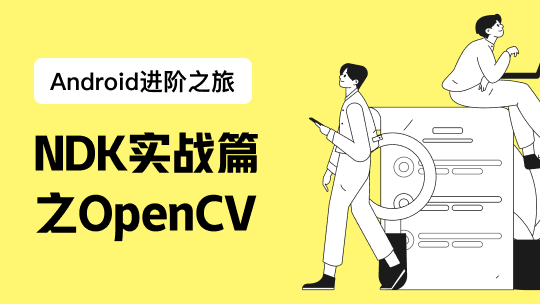作者: 京东零售 王震
背景
在早期参与涅槃氛围标签中台项目中,前台要求接口性能999要求50ms以下,通过设计Caffeine、ehcache堆外缓存、jimDB三级缓存,利用内存、堆外、jimDB缓存不同的特性提升接口性能, 内存缓存采用Caffeine缓存,利用W-TinyLFU算法获得更高的内存命中率;同时利用堆外缓存降低内存缓存大小,减少GC频率,同时也减少了网络IO带来的性能消耗;利用JimDB提升接口高可用、高并发;后期通过压测及性能调优999性能<20ms
当时由于项目工期紧张,三级缓存实现较为臃肿、业务侵入性强、可读性差,在近期场景化推荐项目中,为B端商家场景化资源投放推荐,考虑到B端流量相对C端流量较小,但需保证接口性能稳定。采用SpringCache实现caffeine、jimDB多级缓存方案,实现了低侵入性、可扩展、高可用的缓存方案,极大提升了系统稳定性,保证接口性能小于100ms;
Spring Cache实现多级缓存
多级缓存实例MultilevelCache
/**
* 分级缓存
* 基于Caffeine + jimDB 实现二级缓存
* @author wangzhen520
* @date 2022/12/9
*/
public class MultilevelCache extends AbstractValueAdaptingCache {
/**
* 缓存名称
*/
private String name;
/**
* 是否开启一级缓存
*/
private boolean enableFirstCache = true;
/**
* 一级缓存
*/
private Cache firstCache;
/**
* 二级缓存
*/
private Cache secondCache;
@Override
protected Object lookup(Object key) {
Object value;
recordCount(getUmpKey(this.getName(), UMP_GET_CACHE, UMP_ALL));
if(enableFirstCache){
//查询一级缓存
value = getWrapperValue(getForFirstCache(key));
log.info("{}#lookup getForFirstCache key={} value={}", this.getClass().getSimpleName(), key, value);
if(value != null){
return value;
}
}
value = getWrapperValue(getForSecondCache(key));
log.info("{}#lookup getForSecondCache key={} value={}", this.getClass().getSimpleName(), key, value);
//二级缓存不为空,则更新一级缓存
boolean putFirstCache = (Objects.nonNull(value) || isAllowNullValues()) && enableFirstCache;
if(putFirstCache){
recordCount(getUmpKey(this.getName(), UMP_FIRST_CACHE, UMP_NO_HIT));
log.info("{}#lookup put firstCache key={} value={}", this.getClass().getSimpleName(), key, value);
firstCache.put(key, value);
}
return value;
}
@Override
public void put(Object key, Object value) {
if(enableFirstCache){
checkFirstCache();
firstCache.put(key, value);
}
secondCache.put(key, value);
}
/**
* 查询一级缓存
* @param key
* @return
*/
private ValueWrapper getForFirstCache(Object key){
checkFirstCache();
ValueWrapper valueWrapper = firstCache.get(key);
if(valueWrapper == null || Objects.isNull(valueWrapper.get())){
recordCount(getUmpKey(this.getName(), UMP_FIRST_CACHE, UMP_NO_HIT));
}
return valueWrapper;
}
/**
* 查询二级缓存
* @param key
* @return
*/
private ValueWrapper getForSecondCache(Object key){
ValueWrapper valueWrapper = secondCache.get(key);
if(valueWrapper == null || Objects.isNull(valueWrapper.get())){
recordCount(getUmpKey(this.getName(), UMP_SECOND_CACHE, UMP_NO_HIT));
}
return valueWrapper;
}
private Object getWrapperValue(ValueWrapper valueWrapper){
return Optional.ofNullable(valueWrapper).map(ValueWrapper::get).orElse(null);
}
}多级缓存管理器抽象
/**
* 多级缓存实现抽象类
* 一级缓存
* @see AbstractMultilevelCacheManager#getFirstCache(String)
* 二级缓存
* @see AbstractMultilevelCacheManager#getSecondCache(String)
* @author wangzhen520
* @date 2022/12/9
*/
public abstract class AbstractMultilevelCacheManager implements CacheManager {
private final ConcurrentMap<String, MultilevelCache> cacheMap = new ConcurrentHashMap<>(16);
/**
* 是否动态生成
* @see MultilevelCache
*/
protected boolean dynamic = true;
/**
* 默认开启一级缓存
*/
protected boolean enableFirstCache = true;
/**
* 是否允许空值
*/
protected boolean allowNullValues = true;
/**
* ump监控前缀 不设置不开启监控
*/
private String umpKeyPrefix;
protected MultilevelCache createMultilevelCache(String name) {
Assert.hasLength(name, "createMultilevelCache name is not null");
MultilevelCache multilevelCache = new MultilevelCache(allowNullValues);
multilevelCache.setName(name);
multilevelCache.setUmpKeyPrefix(this.umpKeyPrefix);
multilevelCache.setEnableFirstCache(this.enableFirstCache);
multilevelCache.setFirstCache(getFirstCache(name));
multilevelCache.setSecondCache(getSecondCache(name));
return multilevelCache;
}
@Override
public Cache getCache(String name) {
MultilevelCache cache = this.cacheMap.get(name);
if (cache == null && dynamic) {
synchronized (this.cacheMap) {
cache = this.cacheMap.get(name);
if (cache == null) {
cache = createMultilevelCache(name);
this.cacheMap.put(name, cache);
}
return cache;
}
}
return cache;
}
@Override
public Collection<String> getCacheNames() {
return Collections.unmodifiableSet(this.cacheMap.keySet());
}
/**
* 一级缓存
* @param name
* @return
*/
protected abstract Cache getFirstCache(String name);
/**
* 二级缓存
* @param name
* @return
*/
protected abstract Cache getSecondCache(String name);
public boolean isDynamic() {
return dynamic;
}
public void setDynamic(boolean dynamic) {
this.dynamic = dynamic;
}
public boolean isEnableFirstCache() {
return enableFirstCache;
}
public void setEnableFirstCache(boolean enableFirstCache) {
this.enableFirstCache = enableFirstCache;
}
public String getUmpKeyPrefix() {
return umpKeyPrefix;
}
public void setUmpKeyPrefix(String umpKeyPrefix) {
this.umpKeyPrefix = umpKeyPrefix;
}
}基于jimDB Caffiene缓存实现多级缓存管理器
/**
* 二级缓存实现
* caffeine + jimDB 二级缓存
* @author wangzhen520
* @date 2022/12/9
*/
public class CaffeineJimMultilevelCacheManager extends AbstractMultilevelCacheManager {
private CaffeineCacheManager caffeineCacheManager;
private JimCacheManager jimCacheManager;
public CaffeineJimMultilevelCacheManager(CaffeineCacheManager caffeineCacheManager, JimCacheManager jimCacheManager) {
this.caffeineCacheManager = caffeineCacheManager;
this.jimCacheManager = jimCacheManager;
caffeineCacheManager.setAllowNullValues(this.allowNullValues);
}
/**
* 一级缓存实现
* 基于caffeine实现
* @see org.springframework.cache.caffeine.CaffeineCache
* @param name
* @return
*/
@Override
protected Cache getFirstCache(String name) {
if(!isEnableFirstCache()){
return null;
}
return caffeineCacheManager.getCache(name);
}
/**
* 二级缓存基于jimDB实现
* @see com.jd.jim.cli.springcache.JimStringCache
* @param name
* @return
*/
@Override
protected Cache getSecondCache(String name) {
return jimCacheManager.getCache(name);
}
}缓存配置
/**
* @author wangzhen520
* @date 2022/12/9
*/
@Configuration
@EnableCaching
public class CacheConfiguration {
/**
* 基于caffeine + JimDB 多级缓存Manager
* @param firstCacheManager
* @param secondCacheManager
* @return
*/
@Primary
@Bean(name = "caffeineJimCacheManager")
public CacheManager multilevelCacheManager(@Param("firstCacheManager") CaffeineCacheManager firstCacheManager,
@Param("secondCacheManager") JimCacheManager secondCacheManager){
CaffeineJimMultilevelCacheManager cacheManager = new CaffeineJimMultilevelCacheManager(firstCacheManager, secondCacheManager);
cacheManager.setUmpKeyPrefix(String.format("%s.%s", UmpConstants.Key.PREFIX, UmpConstants.SYSTEM_NAME));
cacheManager.setEnableFirstCache(true);
cacheManager.setDynamic(true);
return cacheManager;
}
/**
* 一级缓存Manager
* @return
*/
@Bean(name = "firstCacheManager")
public CaffeineCacheManager firstCacheManager(){
CaffeineCacheManager firstCacheManager = new CaffeineCacheManager();
firstCacheManager.setCaffeine(Caffeine.newBuilder()
.initialCapacity(firstCacheInitialCapacity)
.maximumSize(firstCacheMaximumSize)
.expireAfterWrite(Duration.ofSeconds(firstCacheDurationSeconds)));
firstCacheManager.setAllowNullValues(true);
return firstCacheManager;
}
/**
* 初始化二级缓存Manager
* @param jimClientLF
* @return
*/
@Bean(name = "secondCacheManager")
public JimCacheManager secondCacheManager(@Param("jimClientLF") Cluster jimClientLF){
JimDbCache jimDbCache = new JimDbCache<>();
jimDbCache.setJimClient(jimClientLF);
jimDbCache.setKeyPrefix(MultilevelCacheConstants.SERVICE_RULE_MATCH_CACHE);
jimDbCache.setEntryTimeout(secondCacheExpireSeconds);
jimDbCache.setValueSerializer(new JsonStringSerializer(ServiceRuleMatchResult.class));
JimCacheManager secondCacheManager = new JimCacheManager();
secondCacheManager.setCaches(Arrays.asList(jimDbCache));
return secondCacheManager;
}接口性能压测
压测环境
廊坊4C8G * 3压测结果
1、50并发时,未开启缓存,压测5min,TP99: 67ms,TP999: 223ms,TPS:2072.39笔/秒,此时服务引擎cpu利用率40%左右;订购履约cpu利用率70%左右,磁盘使用率4min后被打满;
2、50并发时,开启二级缓存,压测10min,TP99: 33ms,TP999: 38ms,TPS:28521.18.笔/秒,此时服务引擎cpu利用率90%左右,订购履约cpu利用率10%左右,磁盘使用率3%左右;
缓存命中分析
总调用次数:1840486/min 一级缓存命中:1822820 /min 二级缓存命中:14454/min
一级缓存命中率:99.04%
二级缓存命中率:81.81%
压测数据
未开启缓存
开启多级缓存
监控数据
未开启缓存
下游应用由于4分钟后磁盘打满,性能到达瓶颈
接口UMP
服务引擎系统
订购履约系统
开启缓存
上游系统CPU利用率90%左右,下游系统调用量明显减少,CPU利用率仅10%左右








